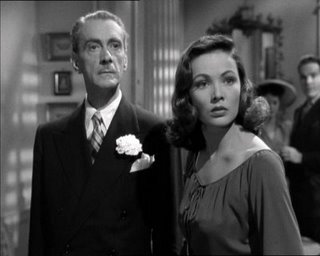Laura’s One Flaw

By Max Eastern
Spoiler Alert: This post will reveal the ending to the book ‘Laura,’ by Vera Caspary (and the movie, for that matter). So if you don’t want it ruined for you, don’t read any further.
What do you like most about reading a mystery novel? If it’s a Raymond Chandler work, it might be the quality of the writing, the beautiful descriptions, the cynical asides. You read Sherlock Holmes to spend time with the great man himself. For many readers, though, it’s the satisfaction of solving the mystery itself, picking up all the clues, analyzing them, figuring out who the killer is before Hercule Poirot does.
But isn’t this only satisfying if you can put yourself in the position of the sleuth, knowing exclusively what he or she knows, only those clues in the story itself? Unfortunately, sometimes an author creates a situation in which a reader will be able to solve a mystery by a clue that lies outside of the book, beyond its pages, a piercing of the third wall.
A good example of what I’m talking about is Vera Caspary’s classic noir Laura. Laura is a member of Manhattan society, an advertising executive who is found murdered in her apartment, her face obliterated by a shotgun blast. The New York City police detective, Mark MacPherson, has three suspects: Laura’s aunt, Ann Treadwell; her fiancé, Shelby Carpenter; and her mentor, an eccentric columnist named Waldo Lydecker. When Laura surprisingly shows up alive in the midst of the investigation, and everyone realizes the real corpse is that of a model at Laura’s agency, Diane Redfern, who was trying to steal Shelby Carpenter away from Laura, Laura herself becomes a suspect.
There are, of course, many clues pointing to all the suspects. Laura had an argument with Diane Redfern. Shelby lied to MacPherson about a number of things occurring the night of the murder. But there is one big clue that overshadows all the others. And it concerns Waldo.
The book is narrated by three characters: Waldo, MacPherson, and then Laura herself. Waldo is a fascinating character. His narration provides a good deal of the back story. He appears prominently in both MacPherson’s and Laura’s narration. And MacPherson spends a lot of time with Waldo. He visits his apartment twice, including the very first scene of the book. He twice has dinner with him. He sees him at Laura’s apartment. Shelby Carpenter doesn’t appear nearly as much in the book, and Ann Treadwell hardly at all. Soon it becomes obvious to the reader that the only reason so much time is spent on Waldo Lydecker is that he must be the killer. And, in fact, he is. He was so jealous of Laura’s intent to marry Shelby Carpenter that he went to her apartment and shot her. He didn’t know that Laura was away and Diane Redfern was staying there. He killed the wrong person.

So, in a sense, the reader is taken out of the pages of the book. It’s hard to ignore Waldo’s prominence. You know you’re not supposed to think about it, but you do. It’s like watching a TV show in which a very famous actor makes a guest appearance early on, and you know he must show up later in a way crucial to the plot because why else would they cast such a major star?
Fortunately, despite this one small defect, Laura is a fantastic read and justifiably one of the classics. The characters are so compelling, the writing so good, and there is so much else going on in the story and with the characters that you may even second-guess the conclusion you reached outside the story, and therefore be genuinely surprised that Waldo did it after all.
Max Eastern is the author of the debut noir mystery, The Gods Who Walk Among Us.



